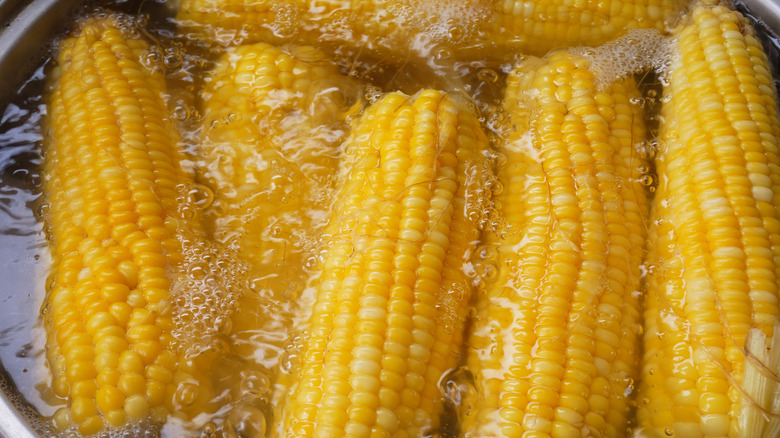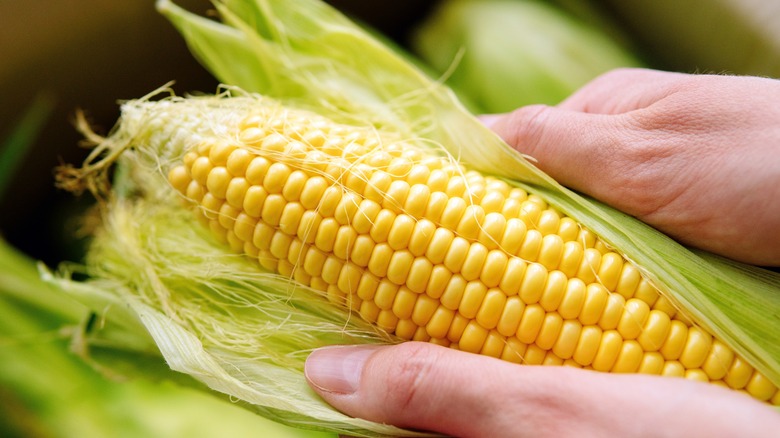The Simple Mistake You're Probably Making When Boiling Corn On The Cob
Juicy and sweet corn on the cob makes for a delicious side dish. Boiling it keeps the corn perfectly moist and simply needing a pat of butter and maybe some salt to complete it. But you might be messing things up if you're overcrowding the pot when boiling.
Each ear of corn needs to be fully submerged in boiling water to cook evenly. If a pot is overcrowded you may end up with different textures on each side of the cob, like some kernels coming out crunchy while others might be soggy and waterlogged. The easiest way to avoid all of this is to make sure each piece has plenty of space — when using a standard 12 quart cooking pot, four ears of corn is the maximum amount you should add in for even cooking.
Thankfully, corn on the cob boils quite quickly, so cooking a few batches won't take too long. Each ear only needs about three to five minutes in the water, or until it becomes a bright shade of yellow and the kernels are tender. Want an even richer final dish? Skip the plain water and instead combine heated milk and butter to create an ultra flavorful way to boil corn on the cob.
Other corn on the cob mistakes to avoid
Beyond overcrowding the pot while boiling corn on the cob, there are a few other sneaky ways you could be messing up this tasty dish. One begins before you even get in the kitchen and involves buying the right corn at the grocery store. To get the freshest picks possible, look for corn husks that are a bright green color and without a dry texture. Avoid the mistake of peeling back the husk to peek at the corn kernels, as this creates a higher likelihood that your corn will dry out before it's even cooked.
Also, always salt the water that you boil corn in. A good rule of thumb is to add enough salt for it to taste like sea water. If the corn you have on hand isn't particularly tasty, this can also be fixed during the cooking process. Adding a few teaspoons of sugar for every gallon of water is the trick for infusing even the most mediocre corn with some sweetness.
Once cooking is complete, drain the corn and let it cool on its own. You may be tempted to rinse it with cold water until it becomes a comfortable temperature to eat, but all this is doing is making it soggy.


